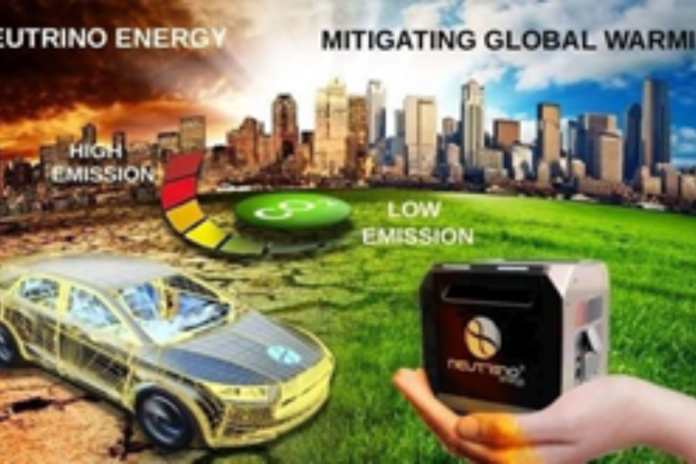From January 1 to September 30, 2023, 235 out of 273 days, or slightly more than 86% of the days, saw intense weather in India. 2,923 people died as a result of these incidents. According to the CSE, February exceeded records and became the warmest in 122 years, while January was somewhat warmer than average.
The situation is the same throughout the world; based on statistics and statistical analysis from NCEI as of October, there is a higher than 99% probability that 2023 will be the warmest year ever recorded. In the Northern Hemisphere, January through October were the warmest on record, 1.44°C (2.59°F) above average.
Globally, human health is already being impacted by climate change. Cities are plagued by air pollution, and millions of people in underdeveloped nations lack access to clean water.
To keep the 1.5°C objective set by COP28 alive, reducing carbon emissions from fossil fuels is essential for preventing global warming. The worldwide emissions data amply demonstrates that, in spite of the concerted efforts of the COP28 member nations, we continue to be on the wrong track.
Emissions of greenhouse gases are currently at an all-time high. Although the leaders of the COP28 have taken steps to bring down emissions, the Paris Agreement’s carbon target is now in threat.
This is a pivotal decade: rates of global warming caused by humans are at an all-time high, and although present mitigation efforts are decreasing global warming emissions by 1.5 ∘C, they may not be sufficient to meet the target.
The Honourable Prime Minister of India, Shri Narendra Modi, has set ambitious transition goals for India, including achieving the fastest pace of renewable capacity addition among all major economies and a target of Net Zero emissions by 2070. India has made significant efforts to stay steadfast in its transition towards clean energy.
Within the intricate and multifaceted modern global energy landscape, one specific thread is attracting increased interest and scrutiny from scientists and policy officials alike: the rather enigmatic and alluring concept of neutrino energy. Neutrinos are elusive subatomic particles that are widely distributed in our cosmos. As governments struggle with the interwoven concerns of sustainable development, climate change, and energy security, the possibility to harness them presents a uniquely revolutionary opportunity.
With its patented neutrino voltaic technology, the Neutrino Energy group of firms in Switzerland, led by Mr. Holger Thorsten Schubart, hopes to meet the predetermined aim of transitioning to clean energy ahead of schedule.
The primary products meant to reduce global warming are Neutrino Power Cubes and Pi-Cars, which are powered by neutrino voltage. During his tour to India, Mr Holger Thorsten Schubart, CEO of Neutrino Energy Group, revealed a plan to establish additional research, development, and manufacture of the neutrino Voltic Cube and Pi-Car in Pune with Indian businesses and government agencies in order to commercialise neutrino technology.
Neutrino Energy Group and Pune-based SPEL Technologies Private Limited have partnered to produce and integrate Supercapacitors—a type of advanced energy storage device—with Pi Car and neutrino voltaic power cubes. Investing of over2.5 billion euros in India for this project will be done by Neutrino Energy.
Similar to a photovoltaic cell, neutrino voltaic technology uses the subatomic particles known as neutrinos, which are abundant in the cosmos, along with other invisible radiation to generate energy.
The Scientific Symphony of Neutrinos
To appreciate the promise of neutrino energy, one must first embark on a journey into the heart of these enigmatic particles. Neutrinos are born from a variety of cosmic events, traversing the cosmos at near-light speeds, untethered by electromagnetic forces due to their neutral charge and infinitesimal mass. Their ability to pass through matter unimpeded – a characteristic that has earned them the moniker ‘ghost particles’ – is precisely what makes them an untapped source of energy.
The Neutrino Energy Group, spearheaded by visionary mathematician Holger Thorsten Schubart, is at the forefront of efforts to harness this boundless energy through their innovative neutrino voltaic technology.
Neutrino voltaic Technology: The Beacon of Hope
Neutrino voltaic technology represents a radical departure from conventional energy sources. Unlike solar panels that rely on sunlight, neutrino voltaic cells convert the kinetic energy of neutrinos and other non-visible forms of radiation into electricity. This process is facilitated by a cutting-edge composition of materials, primarily graphene and silicon, layered in a manner that allows them to resonate with the passage of neutrinos, thereby generating an electrical charge.
For developing nations, the implications of this technology are profound. Unlike solar or wind energy, which are contingent on weather and time, neutrino energy is not bound by diurnal cycles or climatic constraints. This constant availability makes it an ideal candidate to address the perennial energy shortages that plague many developing countries, impeding their economic growth and societal progress.
The Elixir for Energy Deficits in Developing Nations
Energy deficit is a critical bottleneck in the development narrative of many nations. In rural areas, the absence of a robust electrical grid often translates into a reliance on expensive and environmentally detrimental diesel generators.
The introduction of neutrino voltaic technology can upend this status quo, offering a decentralized, sustainable energy source that can power homes, schools, and healthcare facilities, heralding a new era of energy independence and social upliftment.
Bridging the Technological Divide
The digital divide is a stark reality in many parts of the world. Access to technology and the internet is often predicated on reliable electricity, a luxury in many developing regions. Neutrino energy, with its ability to provide a consistent and portable power source, could play a pivotal role in bridging this divide.
By powering communication devices and internet infrastructure, it can catalyse access to education, healthcare information, and e-governance services, effectively catapulting marginalized communities into the digital age.
Fostering Economic Resilience
Economic growth in developing countries is frequently hamstrung by unreliable energy supplies. Industries and businesses suffer from interrupted production cycles, leading to economic losses and diminished competitiveness on the global stage.
Neutrino energy, by virtue of its reliability, could usher in a new paradigm of industrial productivity and economic stability. It can empower small and medium enterprises, the backbone of many developing economies, by liberating them from the vagaries of power cuts and fuel costs.
Environmental Redemption
Developing nations are often caught in the conundrum of pursuing economic growth at the expense of environmental degradation. Neutrino energy offers a path to break free from this dilemma.
By adopting this clean and sustainable energy source, developing countries can leapfrog over the pollutive phases of industrialization that many developed nations underwent. This transition not only aids in global efforts to combat climate change but also preserves the local environment and public health.
The Roadmap to Energy Equity
The quest to harness neutrino energy also embodies a larger vision of energy equity. In a world where access to energy is still a privilege of the few, neutrino voltaic technology stands as a beacon of hope for universal energy access.
Its low maintenance and the absence of a need for an extensive grid infrastructure make it particularly suitable for remote and inaccessible regions, often left behind in the conventional energy paradigm.
Challenges and the Path Forward
The journey to integrate neutrino energy into the fabric of global energy systems is not without its challenges. It requires significant investment in research and development, public and private sector collaboration, and robust policy frameworks to foster innovation and deployment.
Moreover, the dissemination of this technology in developing nations necessitates capacity building and education to ensure its effective implementation and maintenance. The Neutrino Energy Group, cognizant of these challenges, is not just focusing on the technological aspects but also actively engaging in fostering international collaborations and dialogues.
By partnering with governments, academic institutions, and international agencies, the group is laying the groundwork for a future where neutrino voltaic technology is as ubiquitous as the neutrinos themselves.
A Future Illuminated by Neutrinos
As the world stands at the precipice of a new era in energy generation, neutrino energy emerges not just as a scientific marvel but as a beacon of hope for sustainable and equitable development.
For developing nations, it represents a path to transcend traditional barriers, achieve energy independence, and realize their developmental aspirations in harmony with the planet.
The endeavours of the Neutrino Energy Group, therefore, resonate far beyond the realms of science and technology – they are a clarion call for a future where energy is not a commodity, but a right accessible to all. In this quest, neutrinos, once mere cosmic travellers, become the harbingers of a revolution, one that has the potential to illuminate and transform the world, especially where it is needed the most.



